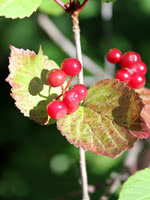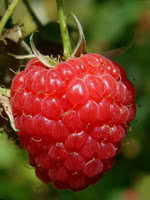Mon-Fri 9am - 5pm Mountain time
Lowbush Cranberry vs Souris Raspberry (an improved Boyne Raspberry)
Viburnum edule
Rubus x Souris
NOT AVAILABLE THIS SEASON - MIGHT RETURN
NOT AVAILABLE THIS SEASON - MIGHT RETURN
Lowbush Cranberry is a short, deciduous shrub native to North America. Its white flowers bear sour but edible fruit that ripens to a brilliant red in fall. Lowbush Cranberry's small size makes it suitable for urban use; buyers will also find it useful if trying to reclaim land back to its original species or when landscaping with native species in damp conditions.
Souris is an improved version of Boyne, the classic prairie raspberry. It is planted all across Canada and is extremely robust. Where other raspberry cultivars rely on unique selling points and specializations, Souris is just generally a great raspberry.
Souris is cold hardy and resistant to disease and spider mites. Its berries are deliciously sweet and tart while colourful, great for U-pick operations, fresh eating, or using in products such as jams and pies. They can be a bit softer than other raspberry varieties.
The Souris Raspberry is a fast-growing floricane. This means that raspberries will not grow on canes the year they first grow. The mature canes they do grow on, however, produce more berries than primocane varieties.

